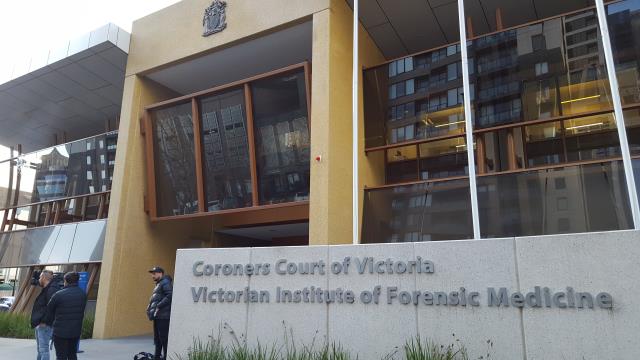A triple-0 caller’s “critical“ warning that a man was armed with a knife was not accurately recorded prior to police shooting him on the Monash Freeway in Dandenong North, a state coroner’s inquest has heard.
The 53-year-old Narre Warren North father of four – who is being identified as XY – was shot during a welfare check which turned into an attempt to arrest him under the Mental Health Act about 10am on 28 May 2020.
Police officers testified that they were unaware XY was armed before he drew a 25-centimetre knife from his jacket.
A police officer fired beanbag shots, which failed to subdue XY.
The man then charged with knife in hand towards the officer. Another police member fired six semi-automatic pistol shots into XY’s body.
XY collapsed on the beanbag-shooting officer and was pronounced dead at the scene.
An Emergency Services Telecommunications Authority (ESTA) call taker had earlier inaccurately recorded a warning that XY’s knife was “not confirmed, nil sighting”, the court heard on 16 March.
ESTA received several triple-0 calls on the incident that morning, including from a school wellbeing officer who had been contacted by XY’s distressed wife.
The officer said XY had left the family home carrying a knife five minutes earlier.
The call taker replied: “He had a knife with him, did he?”
“He did,” the wellbeing officer said.
Later in the call, the call taker asks: “Do we know if he’s got any weapons at all?”
The wellbeing officer replied: “All I know is that (XY’s wife) believes he’s taken a knife with him.”
The call taker recorded into the dispatch system: “Believes M (male) may have had a knife, not confirmed, nil sighting.”
ESTA quality improvement investigator Thomas Dunbar told the court that the ESTA call-takers’ report-taking was “inaccurate”. It shouldn’t have been qualified by “not confirmed, nil sighting”.
“It was inaccurate as it didn’t convey what XY’s wife had seen at the time in an appropriate manner.
“Yes, the complainant (wellbeing officer) didn’t see the knife but that’s not what was conveyed to the wellbeing officer by the wife.”
Mr Dunbar also said the call-taker failed to record the wellbeing officer’s comments that a paranoid XY was “alleging suicide” and “expressing concerns that people are going to harm him” as he left the house.
To compound the error, an ESTA police dispatcher “missed” the “critical” knife reference and failed to warn police of any sighting of a knife at all.
Mr Dunbar said if the dispatch caller saw the knife remark, he would likely have sought clarification from the call-taker.
He told the inquest that the dispatch caller’s “high” workload at the time was not a contributing factor.
At the time, the caller’s radio workload at ESTA was more than 80 per cent of radio occupancy time – which is double the threshold for a “high” workload.
“It was purely just an oversight on his part.
“He was able to read other event remarks but just missed that one whilst he was broadcasting these events.”
In an ideal world, ESTA should have broadcast on a radio to police “succinctly, that he was seen leaving the house armed with a knife”, Mr Dunbar said.
Counsel Assisting Susan Locke asked him: “Those who were making decisions, in particular Dandenong (police unit) 251, were making their decisions based on the information that was dispatched over the radio?“
“Yes,“ Mr Dunbar said.
He also accepted that “information about the knife is critical information“, which was “expected to be transmitted over the radio to police“.
ESTA’s training for call-takers and dispatchers were being modified in response to the incident, the court heard.
At the time, the “out of date” dispatch displays were already being planned for upgrades to bold and redden critical text such as ‘knife’ – to ensure they were broadcast by dispatchers over radio.
On the day of the shooting, XY was not diagnosed with a mental illness.
But his mental health had been “deteriorating” in response to the Covid-19 pandemic and other stressors, the inquiry had earlier heard.
The inquest is also examining police tactics, their decision to halt negotiations and arrest XY and the use of lethal force.
State Coroner Judge John Cain is hearing the matter.







